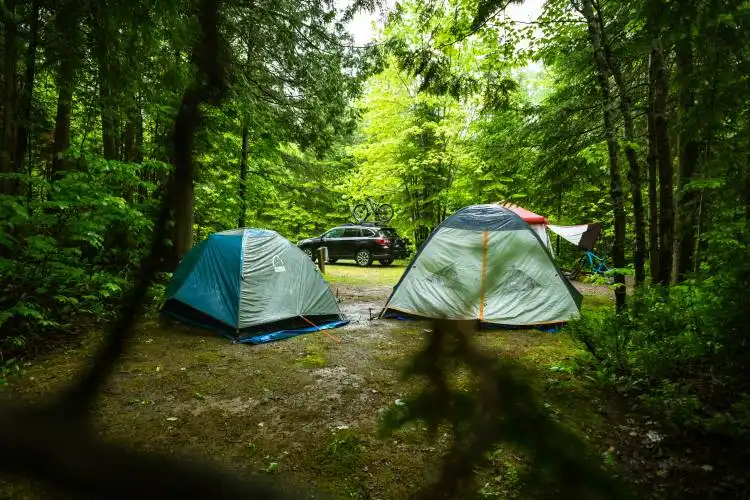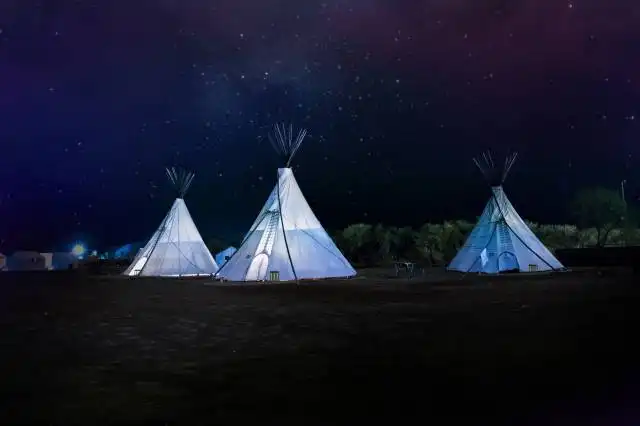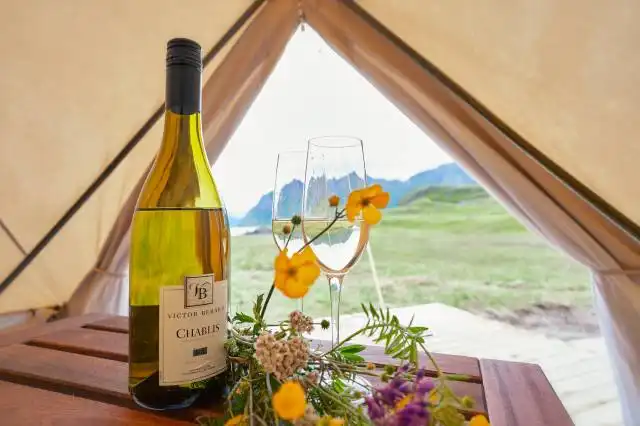Start a Hiking Tour Business
Unleashing Your Inner Adventurer: The Exciting World of Hiking Tour Businesses
| Updated


HIKING TOUR BUSINESS
For those seeking an adventurous entrepreneurial endeavor, look no further than a hiking tour business! This exhilarating enterprise capitalizes on your passion for the great outdoors, leading groups of thrill-seekers on guided hikes in picturesque, often off-the-beaten-path locales. Each day is an adventure where your office is whatever scenic spot you find yourself in - from alpine meadows to mountainside trails. Essentially, a hiking tour business provides outdoor exploration services, allowing you to share the beauty of nature with others while staying fit and making a profit!
Jump to Business Plan
RELATED BUSINESS IDEAS
Browse ALL Hospitality & Leisure Ventures Business Ideas
Discover Your Perfect Domain
Unlock the door to your online success with our hand-picked selection of premium domain names. Whether you're starting a new venture or rebranding an existing one, the right domain can set the tone for your digital presence. Browse through our curated list, each with its unique potential to enhance your brand's visibility and credibility.
HIKING TOUR MINI BUSINESS PLAN
This a quick reality check to help you identify the strengths and weaknesses of your business concept before you dive in.
Hiking Tour Business
Expected Percent Margin:
- Gross Margin: 60-70%
- Net Profit Margin: 20-30%
Earnings Expectations:
- Daily Earnings: $150 - $600
- Weekly Earnings: $1,050 - $4,200
- Monthly Earnings: $4,500 - $18,000
- Annual Earnings: $54,000 - $216,000
Note: These earnings expect seasonal variability, with peak seasons significantly boosting profits.
Actions to Achieve These Numbers:
Tours and Scheduling:
- Offer Different Tour Types: Implement a variety of tours such as family hikes, adventure hikes, and solo trips.
- Flexible Scheduling: Offer daily and weekly schedules with morning, afternoon, and full-day options.
Marketing and Customer Acquisition:
- Website and Social Media: Have an attractive online presence, showcasing your guided tours and client testimonials.
- Partnerships: Collaborate with local hotels, travel agencies, and online platforms to attract tourists.
Cost Control:
- Group Size: Strategize the optimal group size to maximize earnings and maintain a quality experience - typically, 5-10 people per tour.
Safety and Training:
- Training: Ensure that all your tour guides are professionally trained in hiking, first aid, and local knowledge.
- Insurance: Acquire a comprehensive business insurance policy for all possible risks.
Business Operations:
- Quality Equipment: Annually invest in high-quality hiking equipment and give regular maintenance checks.
- Customer Service: Provide unmatched customer service from the point of booking until the end of the tour.
Again, these are approximate figures that can vary based on other variables like location, competition, and more. Always seek financial advice tailored to your situation.
NOT WHAT YOU HAD IN MIND? Here are more ideas



Browse ALL Hospitality & Leisure Ventures Business Ideas
Grab Your Business Website Name
Before you get caught up in the whirlwind of setting up your business, invest in a domain name. It's a small but significant step that lays the foundation for your brand and makes it easier for customers to find and trust you. Just like you wouldn't build a house without securing the land first, don't build a business without securing your domain name.
"Why? Can't that wait?" Here's why it shouldn't
Step 1: Determine if Starting a Hiking Tour Business is Right for You
Breakdown of Startup Expenses
Before starting a hiking tour business, it is important to understand the startup costs associated with the business. These costs can include the cost of renting or purchasing a facility, purchasing or renting the necessary equipment, and covering any legal fees associated with forming a business. It is also important to factor in the cost of marketing and advertising, as well as any costs associated with obtaining any necessary licenses or permits. Additionally, it is important to consider the cost of insurance and any other miscellaneous costs that may be associated with starting a business.
Breakdown of Ongoing Expenses
Once the business is up and running, it is important to understand the ongoing expenses associated with running a hiking tour business. These expenses can include the cost of maintaining and repairing equipment, the cost of hiring and training staff, and the cost of marketing and advertising. Additionally, it is important to factor in the cost of insurance, as well as any other miscellaneous costs that may be associated with running a business.
Examples of Ways to Make Money
There are a variety of ways to make money with a hiking tour business. One way is to charge customers a fee for participating in the tour. Additionally, it is possible to make money by offering additional services such as photography, souvenirs, or transportation. It is also possible to make money by partnering with other businesses such as hotels, restaurants, and retailers. Finally, it is possible to make money by offering additional activities such as camping, fishing, or kayaking.
Step 2: Name the Business
When it comes to naming your hiking tour business, there are a few tips to keep in mind. First, make sure the name is easy to remember and pronounce. It should also be easy to spell and search for online. Additionally, the name should be unique and not already taken by another business. Finally, the name should reflect the type of business you are running and the services you offer.
Choosing a Name
Once you have a few ideas for a name, it’s time to start narrowing down your choices. Start by researching the names online to make sure they are not already taken by another business. You can also search the U.S. Patent and Trademark Office database to make sure the name is not trademarked. If you are still having trouble deciding, try asking friends and family for their opinion. This can help you decide which name is the best fit for your business.
Step 3: Obtain Necessary Licenses and Permits
The third step in starting a hiking tour business is to obtain the necessary licenses and permits. Depending on the location of the business, the type of license or permit needed may vary. For example, a business operating in the United States may need to register with the Internal Revenue Service (IRS) and obtain a business license from the state or local government. Additionally, businesses may need to obtain permits from the local government to operate in certain areas, such as national parks or forests. Businesses may also need to obtain permits from the local health department to serve food or beverages. It is important to research the specific requirements for the business’s location to ensure all necessary licenses and permits are obtained.
Furthermore, businesses may need to obtain insurance to protect the business and its customers in case of an accident or injury. Insurance policies may need to be tailored to the specific type of business, such as a hiking tour business. Additionally, businesses may need to obtain liability insurance to protect against any potential lawsuits. Businesses should research the specific insurance requirements for their location and the type of business they are operating.
Finally, businesses may need to obtain a special license or permit if they are transporting customers in a vehicle. Depending on the location, businesses may need to obtain a special license or permit from the local government to operate a vehicle for commercial purposes. Additionally, businesses may need to obtain a special license or permit to transport customers in a vehicle across state lines. It is important to research the specific requirements for the business’s location to ensure all necessary licenses and permits are obtained.
Step 4: Create a Business Plan
Creating a business plan is essential for any business, and a hiking tour business is no exception. A business plan should include a detailed description of the services offered, a marketing plan, a financial plan, and a plan for operations. It should also include a mission statement and a description of the company's goals. When creating the business plan, it is important to consider the target market, the competition, and the potential for growth. Additionally, the plan should include a budget for startup costs, as well as ongoing expenses. Finally, the business plan should include an outline of the company's legal structure and any licenses or permits that may be required.
Step 5: Secure Funding
Securing funding for a business is an important step in the process of starting a hiking tour business. Depending on the size of the business, the amount of funding needed can vary. It is important to research the different types of funding available, such as grants, loans, and investments. Grants are a great option for businesses that are just starting out, as they do not require repayment. Loans are also an option, but they will need to be repaid with interest. Investments are another option, but they require giving up a percentage of ownership in the business. It is important to research all of these options and determine which is the best fit for the business.
It is also important to create a budget for the business. This budget should include the startup costs, such as equipment, permits, and marketing materials, as well as ongoing costs, such as salaries, insurance, and taxes. This budget should be used to determine how much funding is needed and what type of funding is the best option.
Finally, it is important to create a business plan. This plan should include the goals of the business, the target market, the services offered, and the marketing plan. This plan will be used to secure funding and should be updated as the business grows and changes. It is important to be thorough and honest when creating the business plan, as potential investors will be looking for a well-thought-out plan.
Step 6: Purchase Necessary Equipment
Before you can start your business, you will need to purchase the necessary equipment. This will include items such as hiking boots, backpacks, tents, sleeping bags, and other camping supplies. You may also want to invest in a vehicle to transport your clients and their gear. Additionally, you may need to purchase a variety of safety and first aid supplies. Make sure to research the best options for your business and budget. You may also want to consider renting equipment if you don't have the funds to purchase it upfront. Additionally, you may want to look into purchasing insurance to protect your business and your clients.
Step 7: Market the Business
Once the business is up and running, it is important to get the word out. There are a variety of ways to market a hiking tour business. One of the most effective ways to reach potential customers is to create a website. This website should include information about the business, the types of tours offered, pricing, and contact information. Additionally, it is important to create a presence on social media platforms such as Facebook, Twitter, and Instagram. This allows customers to follow the business and stay up to date on any new tours or promotions.
Another way to market the business is to create partnerships with other businesses in the area. This could include hotels, restaurants, and other tour companies. By forming these partnerships, the business can reach a larger audience and offer discounts or promotions to customers. Additionally, it is important to attend local events and festivals to promote the business. This allows customers to meet the business owners and learn more about the services offered.
Finally, it is important to create a referral program. This could include offering discounts to customers who refer their friends and family to the business. Additionally, it is important to create a loyalty program to reward customers who book multiple tours. This will help to build customer loyalty and encourage customers to come back for future tours.
Step 8: Hire Employees
Hiring employees is an important step in starting a hiking tour business. It is important to find employees who are knowledgeable and experienced in the outdoors, as well as those who are customer service oriented. It is also important to find employees who are passionate about the outdoors and have a good attitude. When hiring employees, it is important to consider the cost of wages and benefits, as well as the cost of training and onboarding. It is also important to consider the legal requirements for hiring employees, such as background checks and paperwork. Additionally, it is important to create a job description that outlines the duties and responsibilities of each employee. This will help ensure that everyone is on the same page and that all expectations are clear. Finally, it is important to create a system for evaluating employee performance and providing feedback. This will help ensure that employees are meeting the expectations of the business and that they are providing the best possible service to customers.
Step 9: Open for Business
Once all the necessary steps have been taken, it is time to open the business. This involves setting up the business's website, advertising, and other marketing efforts. It is also important to make sure that all the necessary licenses and permits have been obtained. Additionally, it is important to establish a customer service system and a payment system. Finally, it is important to set up a system for tracking customer feedback and reviews. This will help the business to identify areas of improvement and to ensure that customers are satisfied with their experience. Additionally, it is important to establish a customer loyalty program to reward customers for their repeat business. This will help to ensure that customers keep coming back for more.
EXPLORE MORE CATEGORIES
Browse ALL Business Idea Categories
TAKE THE NEXT STEPS










